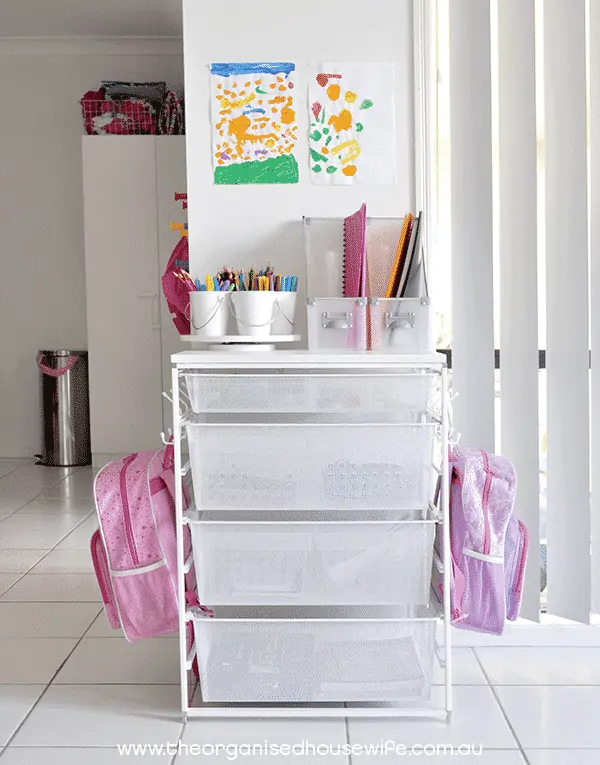When it comes to math, many parents shudder at the idea of helping their kid complete their math homework at the kitchen table. One of the more “difficult” subjects for many, choosing a homeschool math curriculum is one of the things parents tend to dwell on and dread making a decision.
Choosing A Homeschool Math Curriculum
While many subjects are subjective, such as art and writing, others are fact-based such as science and geography. Math, on the other hand, takes a little bit of conceptual thinking and plenty of practice to grasp.
It feels like one of the less “real world” subjects out there, especially when you get into the more difficult high school levels. However, math teaches excellent problem-solving skills and forces the mind to think (and develop!) in a whole new way.
Unless math was one of your favorite subjects, it’s one of the main topics parents tend to outsource through online programs or intensively mapped out curriculums. If you’re struggling to find the right math curriculum for your child, there are a few things you want to keep in mind.
What Is The Best Homeschool Math Curriculum?
No matter the learning style of your child or your preferred teaching method, there is a homeschool math curriculum option out there for you. Everyone approaches math differently, so the best option won’t be the same for everyone. In actuality, it mostly comes down to the teacher. And, when it’s homeschooling…that means you!
Any kind of homeschool curriculum is meant to simply be a tool to help you teach; it won’t do all the work for you.
The book or online curriculum won’t be able to adapt to your kid’s needs, further explaining difficult concepts or real-world examples. Good teachers know how to adjust the types of curriculum and explain it in a way that makes sense to your child.
Of course, this is easier when the teacher has a love for the subject. After all, excitement is contagious! Those with love and understanding of math will do better with fewer resources. A parent who isn’t a math whiz themselves will probably want a curriculum with more resources and guidance for teaching.
What To Look For In Homeschool Math Curriculum
For parents who were taught math in a traditional school, you may think there is only one way to do it. In actuality, there are many different methods to choose from and base your teaching on. You’ll quickly see that there are many options out there. While they cover many of the same topics, the pace and depth of the lessons vary immensely.
The idea is to narrow down your choices by asking yourself a few questions…
- What is the difficulty level of this curriculum? Each curriculum will cover different subjects at different times. Some may consider a topic ideal for second grade, and another won’t cover it until fourth! Understanding where your child is at in understanding should be one of your first steps.
- Is the curriculum teacher intensive? Always take a look at what is needed from you and if you are able to provide that. How much do you need to prepare for the lesson yourself before teaching?
- Similar to above, how scripted are the lessons? Some parents like leading the lesson freely, while others like it all mapped out for them.
- What is the cost? Homeschool math curriculum can range drastically in price, often depending on how many resources it supplies. See what fits in your budget.
- What does it look like visually? Some kids find colors and extra visuals as a way to keep them engaged, while others find it distracting.
You will also see some terms that you may not be familiar with.
Here are a few descriptors that will help you understand the different types of math curriculum:
Short Spiral
You will likely see this pop up in many descriptions when searching for a homeschool math curriculum. Rather than tackle one topic at a time, short spiral programs circle back to topics frequently. Every lesson will include review problems, and a new concept is practiced minimally.
Mastery-Based
Another approach to math, mastery-based programs, tackle one topic at a time. Most traditional textbooks follow this format, where each chapter concentrates on a few topics, then has review problems at the end of the chapter.
Conceptual
Both short spiral and master-based programs can be either conceptual or procedural. First, conceptual focus on the why behind math. This is great for big picture thinkers who wonder why math works the way it does.
Procedural
Opposite of conceptual, procedural teachings focus on how to do the math. This method is good for direct and concrete thinkers who like lots of examples and practice before they move on to abstract principles.
Popular Homeschool Math Curriculum Options
- Saxon Math is a very common option for homeschool parents. It employs the spiraling method, and many of the problems are review-based.
- Harold Jacobs is a great option for a high school student.
- Math-U-See is a program for K-12, perfect for any stage your child is at. It has videos and worksheets and allows the child to see all the math concepts before practicing them. Good for those who struggle with math. This is the program we use and all three of our kids really like it!
- Horizons Math uses the spiral learning technique and tons of color to keep math interesting for grades K-6.
- Singapore Math takes the mental math approach, focusing on developing problem-solving skills. Takes a familiar textbook and workbook approach.
- Miquon Math is designed for grades 1-4 and takes a discovery approach. It encourages observation and exploration to discover patterns and promote creative thinking.
- RightStart Math for grades K-6 utilizes visuals such as games and manipulatives to teach a spiral-based program. Good for the hands-on learner.
- VideoText Math is one of the priciest options out there, designed for grades 8-12, and is a mastery-based program. It focuses on higher-level math, where lessons build on each other.
Narrowing Down Your Homeschool Math Choices
Once you have a few choices that you like by reading their descriptions and reviews, the next step is to test them out yourself. Most homeschool math curriculums will have samples that you can view. Print out these samples to test them rather than viewing them online, as this is how your child will interact with them.
Read through the entire lesson as if you were about to teach it the next day.
Are the teacher notes helpful?
Is the lesson easy for you to follow? If you don’t understand it easily, neither will your child!
How is the layout of the lesson? Imagine your child doing the lesson and whether they would be able to complete the lesson as it is mapped out.
Lastly, don’t think too far ahead. Think about what curriculum is best for your child right now – you don’t have to stick to your current curriculum the following year. Change as needed!
Troubleshooting: When The Curriculum Goes Sour
Even if you carefully researched and your child adores math, the curriculum you decide on doesn’t always go as planned. You can switch to a different type of curriculum, but sometimes that’s not always in the budget or timeline. Instead, you can try one of these ideas:
- If holding an attention span is the main difficulty, try teaching the curriculum in a more interactive way. Games, pictures, and videos are great ways to make learning math more interesting.
- Try incorporating an online curriculum. Sometimes, sitting in front of a book and worksheet can get tiring. Add some online content to switch things up and supplement the purchased curriculum.
- Are the questions too repetitive? Some curriculums have so many questions to review that it may not be necessary. If your child is already grasping the concept, skip exercises or only assign some of the problems.
- Not enough exercises? If you’re having the opposite problem, you can purchase supplemental worksheets to help practice certain concepts.
- Take a break from math. Homeschooling allows you ultimate freedom in deciding when and what to teach. If math is getting too frustrating, take a break for a month – or however long you need.
The Takeaway
Remember, learning should always be fun! Even difficult subjects like math can be taught in creative and engaging ways. The best part about homeschooling is getting to adapt curriculums and experiment until you find that sweet spot.
More Homeschool Inspiration
- How To Homeschool: A Guide For Parents
- How To Create A Homeschool Schedule (That Works)
- 11 Disadvantages of Homeschooling to Consider
- What’s the Difference Between Remote Learning & Homeschool?
- 15 Inspiring Homeschool Room Ideas for Small Spaces
- Pros and Cons of Homeschool & How Do You Homeschool?
- How To Identify Your Children’s Reading Levels + Which Books to Read
- 11 Helpful Charts for Kids: Chores, Reward & Daily Routines to Help Kids Thrive
- Create a Routine: 6 Sample Toddler Schedules from Real Moms
Want even more?
Shop All Parenting Resources
Shop all of our parenting resources from self-regulation tools and managing big emotions to building self esteem and confidence. There are resources for all seasons of life!









